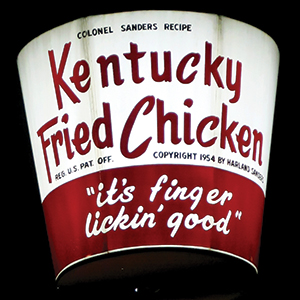We’ve all seen them. The celebrated neon signs of San Jose. We’re talking Stephen’s Meat Products, Western Appliance, the Sands Motel and the Wing’s restaurant sign in Japantown. Signs are essential elements in the collective story of this city. They are part of San Jose’s consciousness.
Thousands of natives have gushed endless praise for San Jose’s old-school neon signage, with many people from out of town also showing up just to photograph the marquees. But with the majority finding solace in bland landscapes, generic signage and village after village of hideously uniform condos that no interesting person would possibly look at, someone is finally taking it upon herself to stop complaining and do something to raise awareness about San Jose’s heritage of neon.
Enter Heather David, San Jose’s resident expert at roadside motel architecture. David has put together a glorious and glossy tour guide called the San Jose Signs Project, a partnership between various communities, historic organizations and local businesses. The mission of The San Jose Signs Project is threefold: to educate, advocate and preserve. The physical guide is only the beginning. A gala hoedown release party is scheduled for somewhere around the end of next month and anyone is welcome to join the Facebook group for up-to-date shenanigans: www.facebook.com/sanjosesignproject.
“I strongly believe that signs are important cultural place markers, and I am not alone,” David says. “Cities all over the country have been working to celebrate and protect their historic signage, and I felt that San Jose, with its notable sign inventory, should step up and do the same.”
One doesn’t have to venture far to understand this. In Tucson, Arizona, for instance, one finds a project called The Neon Pueblo, a large-scale effort that preserved, restored and re-installed 30 neon signs, after local heroes salvaged them from potential destruction. Tucson now incorporates the signs as part of how the city markets itself to tourists. One can acquire a massive 40-page, full-color guide to the whole project, complete with a map of all the signs. The city even revised some of the sign codes to accommodate the preservation of these unique assets, understanding that neon was part of Tucson’s colorful history.
The city of Phoenix’s Historic Preservation Office presents a similar concept: a two-page guide on “Mid-Century Marvels,” which directs visitors to architecture and neon from the postwar era. Clearly, they understand the ways in which neon signage plays a role in the collective story of a city.
I can cite other examples—from Amarillo, Texas, to Vancouver, British Columbia—and in the latter case, the Vancouver Neon Project includes photographs of former and remaining signage all over the city, especially in its Chinatown. In the ’50s, Vancouver claimed over 18,000 neon signs, second only to Las Vegas. Tasteless bureaucrats came along and outlawed the signs for decades, until the city eventually reevaluated its policies in 2000. Now the signs are back.
“Every sign has a story to tell,” David says. “This story can be a reflection of the larger society’s values at the time of the sign’s inception and/or it can be a story of a region’s unique local history. The animated neon Wing’s sign in Japantown, for example, is a place marker for one of San Jose’s original Chinatowns.”
The San Jose Signs Project guide includes 25 classic signs still remaining in San Jose. Included are Falafel’s Drive-In, Time Deli, Y Not, Mr. T’s Liquor Locker and the Kentucky Fried Chicken Bucket at 250 N. Bascom Ave. Regarding the last example, people from all over the country visit San Jose to photograph the KFC bucket because it’s one of the last in the U.S. and the oldest one still standing. Similarly, the neon diving lady at the City Center Motel on Reed is one of only two original motel sign divers left in the entire state of California. They used to be everywhere, but no more.
“The long-term goal for this project is to obtain protections for as many of our historic signs as possible,” David says. “The short-term goal is to conduct a professional inventory of San Jose’s signs, and identify those that are indeed historic and require protection.”
Amen. Long live neon!




